Question BANK PDF

| Title | Question BANK |
|---|---|
| Author | عاصفة الصحراء |
| Course | Mechanical Engineering |
| Institution | جامعة صنعــاء |
| Pages | 19 |
| File Size | 429.1 KB |
| File Type | |
| Total Downloads | 76 |
| Total Views | 194 |
Summary
Question BANK on mobile communication...
Description
Dr. NAVALAR NEDUNCHEZHIYAN COLLEGE OF ENGINEERING Tholudur, Cuddalore (Dt) – 606 303.
QUESTION BANK Subject Code/Subject: EC1451/MOBILE AND WIRELESS COMMUNICATION Name : K.ANBUARASAN Dept : ECE
Designation : ASSISTANT PROFESSOR Semester : VI VIII II
UNIT I PRINCIPLES OF WIRELESS COMMUNICATION Digital modulation techniques – Linear modulation techniques – Spread spectrum modulation – Performance of modulation – Multiple access techniques – TDMA – FDMA – CDMA – SDMA – Overview of cellular networks – Cellular concept – Handoff strategies – Path loss – Fading and Doppler effect. PART-A (1 MARK) 1. An AM signal is represented by x(t) = (20+4sin500πt)cos(2πx105t)V. The modulation index is (A) 20 (B) 4 (C) 0.2 (D) 10 2. An AM signal is represented by x(t) = (20+4sin500πt)cos(2πx105t)V. The total signal power is (A) 208 W (B) 204 W (C) 408 W (D) 416 W 3. An AM signal is represented by x(t) = (20+4sin500πt)cos(2πx105t)V. The total sideband power is (A) 4 W (B) 8 W (C) 16 W (D) 2 W 4. A 2 kW carrier is to be modulated to a 90% level. The total transmitted power would be (A) 3.62 kW (B) 2.81 kW (C) 1.4 kW (D) None of the above 5. An AM broadcast station operates at its maximum allowed total output of 50 kW with 80% modulation. The power in the intelligence part is (A) 12.12 kW (B) 31.12 kW (C) 6.42 kW (D) None of the above 6. A 2 MHz carrier is amplitude modulated by a 500Hz modulating signal to a depth of 70%. If the unmodulated carrier power is 2 kW, the power of the modulated signal is (A) 2.23 kW (B) 2.36 kW (C) 1.18 kW (D) 1.26 kW 7. In a DSB-SC system with 100% modulation, the power saving is (A) 50% (B) 66% (C) 75% (D) 100%
8. In amplitude modulation, the modulation envelope has a peak value which is double the unmodulated carrier value. What is the value of the modulation index? (A) 25% (B) 50% (C) 75% (D) 100% 9. If the modulation index of an AM wave is changed from 0 to 1, the transmitted power (A) increases by 50% (B) increases by 75% (C) increases by 100% (D) remains unaffected 10. A diode detector has a load of 1kΩ shunted by a 10000 pF capacitor. The diode has a forward resistanceof 1Ω. The maximum permissible depth of modulation, so as to avoid diagonal clipping, with modulating signal frequency of 10 kHz will be (A) 0.847 (B) 0.628 (C) 0.734 (D) None of the above 11. An AM signal is detected using an envelope detector. The carrier frequency and modulating signal frequency are 1 MHz and 2 kHz respectively. An appropriate value for the time constant of the envelope detector is. (A) 500 μ sec (B) 20 μ sec (C) 0.2 μ sec (D) 1 μ sec 12. For an AM signal, the bandwidth is 10 kHz and the highest frequency component present is 705 kHz. The carrier frequency used for this AM signal is (A) 695 kHz (B) 700 kHz (C) 705 kHz (D) 710 kHz 13. In a broadcast transmitter, the RF output is represented as e(t) = 50[1+0.89cos5000t+0.30sin9000t]cos(6x106t)V. What are the sidebands of the signals in radians? (A) 5x103 and 9x103 (B) 5.991x106, 5.995x106, 6.005x106 and 6.009x106 (C) 4x103, 1.4x104 (D) 1x106, 1.1x107, 3x106 and 1.5x107 14. An AM modulator has output x(t) = 40cos400πt + 4cos360πt + 4cos440πt. The modulation efficiency is (A) 0.01 (B) 0.02 (C) 0.03 (D) 0.04 15. An AM modulator has output x(t) = Acos400πt + Bcos380πt + Bcos420πt. The carrier power is 100 W and the efficiency is 40%. The value of A and B are (A) 14.14, 8.16 (B) 50, 10 (C) 22.36, 13.46 (D) None of the above 1 2 3 4 5 6 7 8 9 10 11 12 13 14 15 C
B
A
B
A
A
B
D
A
PART-B
A
B
B
B
B
A (2 MARKS)
16. What is digital modulation? A method of decoding information for transmission. Information, or in this case, a voice conversation is turned into a series of digital bits; the 0s and 1s of computer binary language. At the receiving end, the information is reconverted. 17. what is FSK, PSK, QAM? The most fundamental digital modulation techniques are based on keying: a)In the case of PSK (phase-shift keying), a finite number of phases are used. b)In the case of FSK (frequency-shift keying), a finite number of frequencies are used. c)In the case of ASK (amplitude-shift keying), a finite number of amplitudes are used. d)In the case of QAM (quadrature amplitude modulation), a finite number of at least two phases, and at least two amplitudes are used.
18. Define spread spectrum techniques In spread spectrum, the signal occupies a bandwidth in excess of the minimum necessary to send the information the band spread is accomplished by means of a code that is independent of the data, and a synchronized reception with the code at the receiver is used for despreading and subsequent 19. Define FDMA? Frequency Division Multiple Access", is the division of the frequency band allocated for wireless cellular telephone communication into many channels, each of which can carry a voice conversation or, with digital service, carry digital data. FDMA is a basic technology in the analog Advanced Mobile Phone Service (AMPS), the most widely-installed cellular phone system installed in North America. With FDMA, each channel can be assigned to only one user at a time. FDMA is also used in the Total Access Communication System (TACS). 20. Define TDMA Time division multiple access (TDMA) is a channel access method for shared medium (usually radio) networks. It allows several users to share the same frequency channel by dividing the signal into different timeslots. The users transmit in rapid succession, one after the other, each using his own timeslot. This allows multiple stations to share the same transmission medium (e.g. radio frequency channel) while using only the part of its bandwidth they requir 21. What are the channels used in mobile communication systems? Forward voice channels (FVC) Reverse voice channels (RVC) Forward control channels (FCC) Reverse Control channels (RCC) 22. What are the basic units of a Cellular system?[MAY-2011] Mobile stations Base stations Mobile Switching Center (MSC) or Mobile Telephone Switching Office (MTSO). 23. What are the classifications of Wireless technologies and systems? Cellular mobile radio systems ,Cordless telephones ,Wide-area wireless data systems ,High-speed WLANs ,Paging/messaging systems and Satellite-based mobile systems 24. what is meant by handover technique.[MAY-2011] In a cellular radio system having a two layer cell structure comprised by macro cells (1) overlaying microcells (2), handover occurs only via the macro cell layer. Thus when the quality of a call handled by a microcell (2) deteriorates below predetermined criteria the call is handed up rapidly to the umbrella macro cell and is only handed back down to a microcell when the handset has been in that microcell for a predetermined time and the quality of the link thereto exceeds predefined criteria. 25. What are the different types of Hand over? Intra-satellite hand over Inter-satellite hand over Gateway hand over Inter-system hand over 26. Define modulation. It is the process of encoding information from a message source in a manner suitable for transmission. 27. State the different analog modulation schemes. Amplitude and frequency modulation. 28. State the different modulation schemes. Amplitude shift keying, frequency shift keying, phase shift keying. 29. Define amplitude modulation.
The amplitude of the high frequency carried is varied in accordance to the instantaneous amplitude of the message signal. 30. State the techniques used for SSB generation. Filter method and balanced modulator method. 31. State the advantages of digital modulation schemes. Power efficiency and bandwidth efficiency. 32. Define bandwidth efficiency. It describes the ability of the modulation scheme to accommodate data within a limited bandwidth. 33. Define Power efficiency. It describes the ability of the modulation scheme to preserve the fidelity of the digital message at low power levels. 34. State the different types of line coding. Return to zero, non-return to zero and Manchester. 35. State the types of modulation schemes used in mobile communication. GMSK, GFSK and DQPSK. 36. Give the equation used to represent a BPSK signal. SBPSK (t) = m (t)2 √ Eb cos (2πfct + θc) 37. What is coherent detector? T If the receiver has prior knowledge of the transmitted signal then the receiver is known as coherent detector. 38. State the advantage of using GMSK rather than MSK. The bandwidth occupied by GMSK modulated signal is less in comparison to MSK modulated signal. 39. What is CPFSK ? Continuous phase frequency shift keying. It is another name for MSK. 40. What is QAM ? Quadrature amplitude modulation. 41. State the difference between MSK and GMSK. GMSK uses a Gaussian pulse shaping filter prior to MSK. 42. What is a diversity receiver? Diversity receiver is the diversity scheme applied at the receiver end of the antenna in all effective technique for reducing interference, where selective combiner is used to combine two-correlated signal. 43. Expand PCS, PLMR, NLOS and DECT. PCS - Personal Communication Systems. PLMR – Public Land Mobile Radio NLOS – Non Line Of Sight DECT – Digital Equipment Cordless Telephone 44. Mention the three partially separable effects of radio propagation. The three partially separable effects of radio propagation are, Multi path fading Shadowing Path loss 45. What is known as Quadrature Modulation? In digital modulations, instead of transmitting one bit at a time, we transmit two or more bits simultaneously. This is known as M-ary transmission. This type of transmission results reduced channel BW. However sometimes the use two quadrature carriers for modulation. This process of transmitting 2 quadrature carrier for modulation is known as quadrature modulation. 46. What are the design characteristics of digital modulation scheme? Maximum data rate,
Minimum transmitted power, Maximum channel BW, Maximum resistance to interfering signals, Minimum circuit complexity. 47. What are coherent digital modulation techniques? Coherent digital modulation techniques are those techniques which employ coherent detection. In coherent detection, the local carrier generated at the receiver is phase locked with the carrier at the transmitter. Thus, the detection is done by correlating received noisy signal and locally generated carrier. The coherent detections a synchronous detection. 48. What are the non-coherent digital modulation techniques? Non-coherent digital modulation techniques are those techniques in which the detection process does not need receiver carrier to be phase locked with transmitter carrier. The advantage of such type of system is that the system becomes simple. But the drawback of such a system is that the error probability increases. 49. Give some advantage of QPSK: For the same bit error rate, the BKJ required by QPSK is reduced to half as compared to BPSK. Because of reduced BW, the information transmission rate of QPSK is higher Carrier power almost remains constant. 50. Drawbacks of MSK as compared to QPSK: 1. The BW requirement of MSK is 1.5 fb, whereas it is fb in QPSK. Actually this cannot be said series drawback of MSK. Because power to BW ratio of MSK is more 99% of signal. 2. Power can be transmitted within the BW of 1.2 fb in MSK. While QPSK needs around 8fb to transmit the same power. 51. Bring out the difference between coherent and non-coherent binary modulation schemes Coherent binary modulation Here the local carrier generated at the receiver is phase locked with the carrier at the transmitter. Thus detection is done by correlating received noisy signal and locally generated carrier. The coherent detection is a synchronous detection. Here the error probability does not decreases
Non-coherent binary modulation Here the detection process does not need receiver carrier to be phase locked with transmitter carrier. Here error probability increases.
52. What is the error probability of MSK and DPSK? The error probability of MSK is given by Pe
Eb 1 erfc 2 No
1 Eb exp 2 No 53.In minimum shift keying what is the relation between the signal frequencies and bit rate? The bit rate is given by The error probability of DPSK is given by
Eb 1 erfc No 2 Where Pe
Pe
Eb >>>>> Transmitted signal energy per bit; No >>>>> Noise density 54. What is maximum likelihood decoder? Set f x x / mk is always non-negative and since the logarithmic function is a monotonically increasing function of its argument we may restate the decision rule in terms of metric as follows
Set m m i, if
ln f x X / mk is maximum for k = i
Where ‘ln’ denotes the a natural log. This decision rate is referred to as maximum likelihood rule and device for its implementation is referred to as maximum likelihood decoder. 55.What is DPSK? Differential phase –shift keying is the non-coherent version of PSK. It is differentially coherent modulation method. It does not need a synchronous carrier at the demodulator. The input sequence of binary bits is modified such that the next bit depends upon the previous bit. Therefore in the receiver bits are used ot detect the present bit. 56.What are the advantages of DPSK? DPSK does not need carrier at its receiver. This means that the complicated circuitry for generation of local carrier is avoided. The bandwidth requirement of DPSK is reduced compared to that of BPSK 57.What is capture effect? The capture-effect is a direct result of the rapid nonlinear improvement in received quality for an increase in the received power. If two signals in the same frequency band are available at an FM receiver, the one appearing at the higher received signal level is accepted and demodulated, while the weaker one is rejected. This inherent ability to pick-up the strongest signal and reject the rest makes FM systems very resistant to co-channel interference and provides excellent subjective received quality. This effect is called as capture-effect. PART-C (16 MARKS) 58. Describe in detail about the Analog Amplitude Modulation techniques used in mobile radio. 59. Describe in detail about the Angle Modulation techniques used in mobile radio. 60. Describe in detail about the demodulation techniques for FM waves used in mobile radio. 61. Describe in detail about the Digital modulation schemes BPSK. [MAY-2011] 62. Describe in detail about the Digital modulation schemes DPSK and QPSK. 63. Describe in detail about the Space diversity techniques. 64. Explain the concept of TDMA scheme. [MAY-2011] 65. Explain hand off process in cellular networks. [MAY-2011]
UNIT II WIRELESS PROTOCOLS
Issues and challenges of wireless networks – Location management – Resource management – Routing – Power management – Security – Wireless media access techniques – ALOHA – CSMA – Wireless LAN – MAN – IEEE 802.11 (a–b–e–f–g–h–i) – Bluetooth. Wireless routing protocols – Mobile IP – IPv4 – IPv6 – Wireless TCP.Protocols for 3G & 4G cellular networks – IMT – 2000 – UMTS – CDMA2000 –Mobility management and handover technologies – All-IP based cellular network PART-B
(1 MARK)
PART-A (1 MARK) 66. To send a packet data using datagram, when a connection will be established a) before data transmission b) connection is not established before data transmission c) no connection required d) none of the above 67.connectivity is a concept related to a) transmitting information,either by computer or by a phone b) the interconnection within a computer c)using computer networks to link people and resources d)being in an active session with your computer 68.One of the most dramatic changes in connectivity and communications in the past five years or so has been ____ a) mobile or wireless telephones b) public and private discussion c) satellite uplinks d) running programs on remote computers 69.The four basic elements of any communication system include a)peer-to-peer, videoconferencing, online photo-conferencing, net optical b)sending and receiving devices, communication channel, connection device, and data transmission specifications c)telephone lines, coaxial cables, fiber-optics cables, and communication channel d)software, hardware, communication channel, network 70.These communication devices originate as well as accept messages in the form of data, information, and/or instructions. a) i-drives b)sending and receiving devices c) key chain drives d) optical drives 71.The transmission medium that carries the message is referred to as the a)send and receive device b)communication channel c)protocol d)gateways 72.Data is transmitted using light through a ____ cable. a)twisted pair b)fiber-optic c)coaxial d)microwave 73.Which physical connection is the fastest? a) twisted pair b) coaxial cable c) fiber-optics d) microwaves 74.Most Web-enabled devices follow a standard known as
a)FireWire b)Bluetooth c)TCP/IP d)Wi-FI 75.This wireless standard is widely used to connect computers to each other and to the Internet. a) 802.11 b) RJ45 c)Blueband d) Broadband 76.Bluetooth is a type of radio wave information transmission system that is good for about a)30 feet b)30 yards c) 30 miles d)300 miles 77.A term relating to sending data to a satellite is a)uplink b) downlink c) modulate d)demodulate 78.A credit card-sized expansion board that is inserted into portable computers that connects the PC to the telephone wall jack is called what? a)Internal modem b)External modem c)PC Card modem d)Wireless modem 79.Standard telephone lines and conventional modems provide what is called a)Bluetooth service b)dial-up service c)wireless service d)WiFI service 80.Special high-speed lines used by large corporations to support digital communications are known as a)satellite/air connection service lines b)cable modems c)digital subscriber lines d)T1, T2, T3 and T4 lines 81.The rules for exchanging data between computers are called a)interconnections b)synchronous packages c)protocols d)data transmission synchronization 82.Each computer on the Internet has a unique numeric address called a(n) a)domain address b)protocol address c)IP address d)Web address 83.____ is the process of breaking down information sent or transmitted across the Internet into small parts called packets. a)protocol b)bandwidth c)reformatting d)identification 84.Two or more computers connected so that they can communicate with each other and share information is called a a)satellite b)protocol c)broadcast d)network ANSWER: 66 67 68
69 70 71 72
73 74 75 76
77 78 79
80 81 82 83 84
c
b
c
a
d
c
a
b
b
b
d
a
a
PART-B
c
b
c
c
c
d
(2 MARKS)
85.Define routing. [MAY-2011] Routing (or routeing) is the process of selecting paths in a network along which to send network traffic. Routing is performed for many kinds of networks, including the telephone network, electronic data networks (such as the Internet), and transportation networks 86. What is network security? The field of networking, the specialist area of network security consists of the provisions made in an underlying computer network infrastructure, policies adopted by the network administrator to protect the network and the network-accessible resources from unauthorized access, and consistent 87. Define ALOHA
Aloha, also called the Aloha method, refers to a simple communications scheme in which each source (transmitter) in a network sends data when ever there is a frame to send. If the frame successfully reaches the destination (receiver), the next frame is sent. If the frame fails to be received at the destination, it is sent again. This protocol was originally developed at the University of Hawaii for use with satellite communication systems in the Pacific. 88. What is IMT 2000? IMT 2000, also known as International Mo...
Similar Free PDFs

Dmdw-question bank - question bank
- 17 Pages

Question bank
- 8 Pages
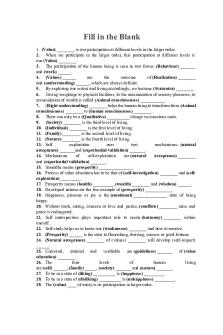
Question Bank 3question bank
- 6 Pages

Question BANK
- 19 Pages
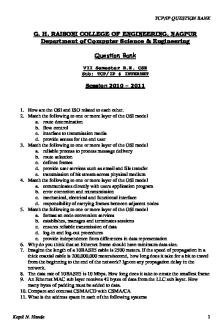
Tcp-ip-question-bank
- 25 Pages

Chapter 4 - Question Bank
- 28 Pages

DIP Question Bank Sheetal
- 14 Pages
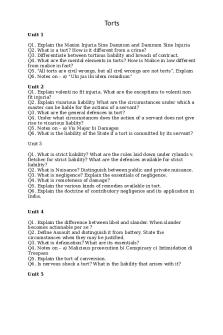
Torts Question Bank
- 2 Pages
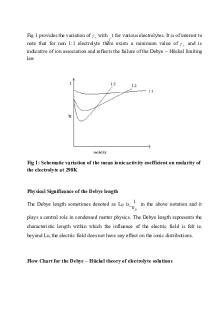
QB5 - Question Bank 5
- 104 Pages

Assessment Question Bank 1
- 22 Pages
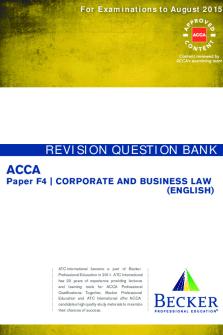
Revision Question Bank 60
- 154 Pages
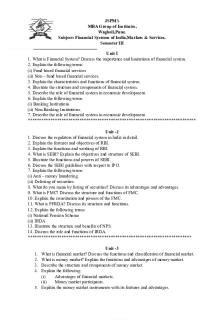
Fsims Question Bank
- 4 Pages

11. Autocad question bank
- 14 Pages
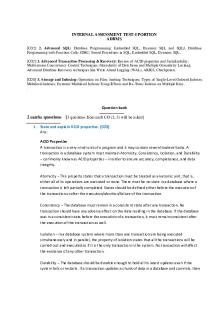
Question bank Adbms - solution
- 45 Pages

Viva Question Bank - CSS
- 17 Pages

Strategic Management Question Bank
- 29 Pages
Popular Institutions
- Tinajero National High School - Annex
- Politeknik Caltex Riau
- Yokohama City University
- SGT University
- University of Al-Qadisiyah
- Divine Word College of Vigan
- Techniek College Rotterdam
- Universidade de Santiago
- Universiti Teknologi MARA Cawangan Johor Kampus Pasir Gudang
- Poltekkes Kemenkes Yogyakarta
- Baguio City National High School
- Colegio san marcos
- preparatoria uno
- Centro de Bachillerato Tecnológico Industrial y de Servicios No. 107
- Dalian Maritime University
- Quang Trung Secondary School
- Colegio Tecnológico en Informática
- Corporación Regional de Educación Superior
- Grupo CEDVA
- Dar Al Uloom University
- Centro de Estudios Preuniversitarios de la Universidad Nacional de Ingeniería
- 上智大学
- Aakash International School, Nuna Majara
- San Felipe Neri Catholic School
- Kang Chiao International School - New Taipei City
- Misamis Occidental National High School
- Institución Educativa Escuela Normal Juan Ladrilleros
- Kolehiyo ng Pantukan
- Batanes State College
- Instituto Continental
- Sekolah Menengah Kejuruan Kesehatan Kaltara (Tarakan)
- Colegio de La Inmaculada Concepcion - Cebu